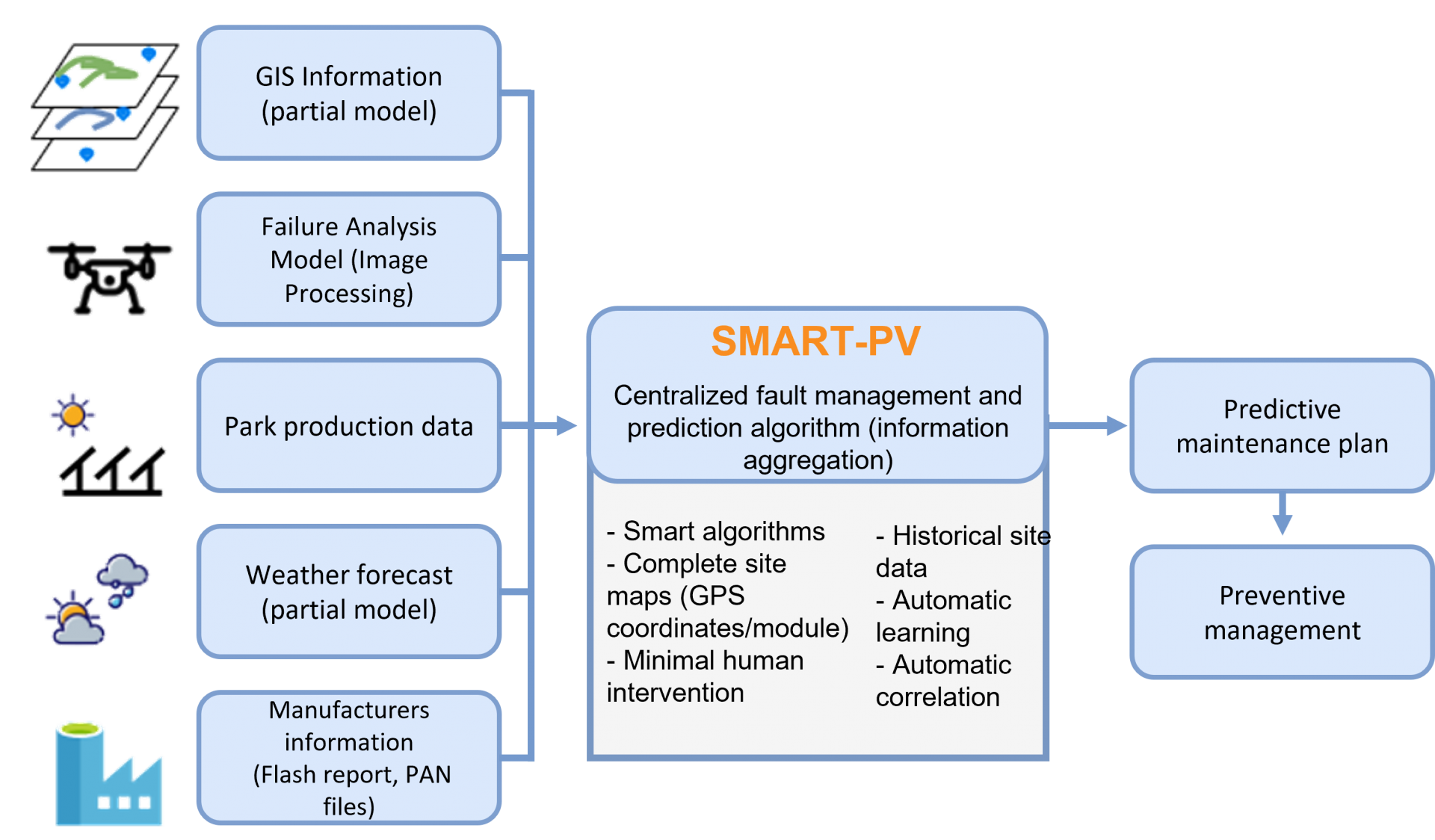Project Context
The production of electrical energy using renewable energy sources is currently an irreplaceable element in the composition of the service offer of environmentally sustainable power generation systems. In this way, the production of electricity from photovoltaic sources is highly complementary to the seasonality of wind energy sources. Along with its very competitive prices compared to fossil fuels, solar energy will have an ever-increasing economic and environmental impact.
The production of photovoltaic solar energy has grown annually at a rate of 40% and both the associated technology and the configuration of the plants themselves are changing in a disruptive way. Instead of easily accessible peak megawatt (MW) power plants with just one type of technology available, the new configurations are hundreds of MW installed in various locations and with various technologies involved. Current photovoltaic plant operators are not prepared to optimize and maximize the profitability of these new types of assets due to the significant increase in installed power, the difficulty of accessing the panels (granularity), the significant number of hours of employees for data analysis and, therefore, also due to the lack of adequate management tools.
